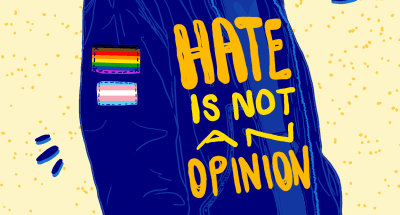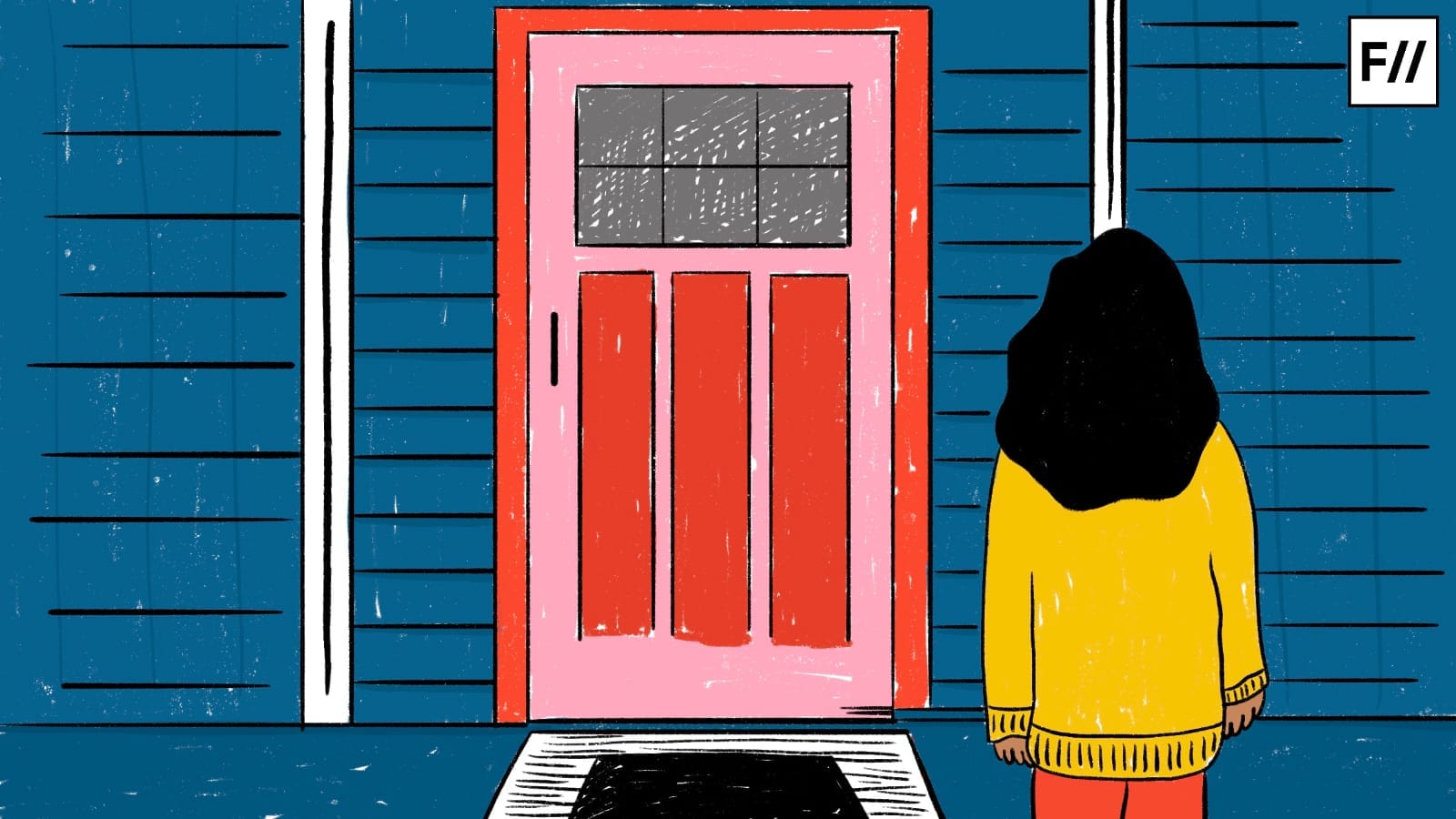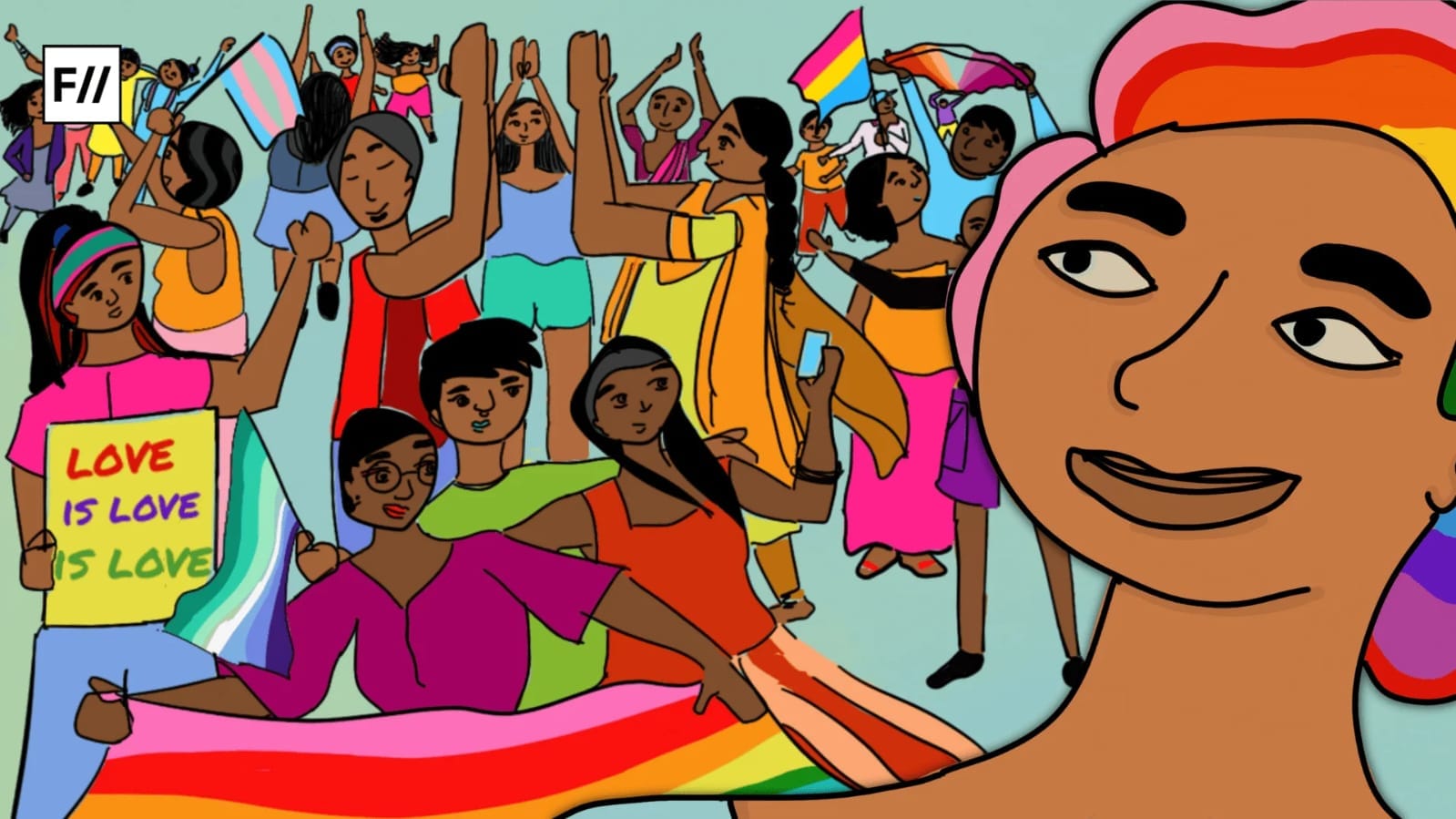History has been witness to various forms of oppression—cultural, religious, linguistic, sexual and various others. However, just as inevitable is stopping the sun from rising, so is crushing the spirit of liberation. From abolishing slavery, destroying racist boundaries within institutions, allowing women to vote, legalising gay marriages in USA, to the abolition of sati, independence, upliftment of Dalits and other backward classes, and decriminalising homosexuality in India, the oppressed have been attempting at liberation gradually. However, visible from my comparison in the previous statement, it is evident that the LGBT+ community has yet to destroy a lot of barriers in our country.
After the Supreme Court decriminalised homosexuality in 2018, critiques have always asserted one thing — ‘law won’t change anything if the society doesn’t accept it, change has to be brought from within the society.’ That statement, though might seem very conservative, is partially correct.
Celebrating acceptance in law should not be seen as winning the final level of liberation, but as completing just the tutorial of it. As the law changed, the state now officially recognizes gay, queer and trans people as legitimate citizens, thereby clearing the way for the real goal — total equality. The fact remains that law can only initiate, but not conclude, the removal of a stigma in a society.
Celebrating acceptance in law should not be seen as winning the final level in a game, but as completing just the tutorial of it. As the law changed, the state now officially recognizes gay people as legitimate citizens, thereby clearing the way for the real goal — total equality. The fact remains that law can only initiate, but not conclude, the removal of a stigma in a society.
Destigmatizing Culture
The most crucial part in destigmatising people, or a phenomenon, is by making the culture more accepting. For example, the destigmatisation of Dalits only began when the culture around us was influenced by improving their public presence, livelihood and education. Most of the cultural values in this generation are adopted from pop culture and social media. Therefore, it doesn’t take a genius to acknowledge that the stream of hate too, which has been fueling homophobia must have their origin in pop culture and social media.
A good example is the Indian YouTube celebrity – Carryminati. If one were to observe the memes and jokes that are forwarded on social media, one would realise that Carry is often addressed as ‘Bhai’ or ‘Brother,’. Teenagers tend to impersonate the speaking style of ‘Carry Bhai,’ and unsurprisingly, Tik-Tok’s rating fell as low as 1.1 after Carryminati had made a roast video of Tik-Tokers, which was later taken down. This makes it clear how strong of an impact Carry has on the Indian youth, making him rightfully prone to scrutiny and criticism for his insensitive words and actions against the queer community.
In his particular infamous video, one cannot deny the fact that his primary targets for roast were Tik-Tokers and not the LGBT+ community. However, the reason why this particular video faced widespread criticism was that the language that was used to roast the Tik-Tokers was largely internalised homophobia. The ‘humour’ in this roast, was feeding on to the stigma towards the queer community.
One has to understand why stigmas need to be removed in the first place. Imagine being gay and being part of a group where people use phrases like, ‘That’s so gay’ or ‘Meetha’ to label undesirable things. Now when you see your peers using the word you identify with as a joke, your courage to come out to them is shattered. As the jokes continue, they demean all the struggles that the queer community goes through while asserting themselves as different from the heterosexual majority. It is like, if your name is being used as a ‘bad-word,’ would you ever dare to tell them your name?
Stigma to Humour
The discourse on humour is not simply restricted to the person perpetrating homophobia through their content. It becomes even more crucial for the audience who might support the LGBT community, but don’t find anything wrong in the video. The use of words like ‘Meetha,’ the use of hand gestures representing a same-sex kiss in a strange manner, or the use of words relating to number 6 or ‘chhakka’ or making fun of effeminate men, has been translated into humour in videos like Carry’s, stigmatising people across the LGBT+ spectrum. Imagine how calling someone straight would never make a fine joke, but calling a friend of yours ‘gay’ would immediately help you generate laughter. This is the point where homophobia is internalised.
Also read: It Is Not Easy Being Gay In A Christian State: Iohborlang Keven Hanson’s Story
There is nothing inherently wrong with the words ‘Gay’, ‘Chakka’, ‘Meetha’, or for that matter, ‘Aurat’, ‘Langda’, ‘Kaala’, ‘Chamaar’, because these are the identifiers of oppressed communities, because they are who they are, and there is nothing to be ashamed of. However, when one uses these words as derogatory remarks, or to put a person down, the stigma is strengthened.
One has to understand why stigmas need to be removed in the first place. Imagine being gay and being a part of a group where people use phrases like, ‘That’s so gay’ or ‘Meetha’ to label undesirable things. Now when you see your peers using the word you identify with, as a joke, your courage to come out to them is shattered. As the jokes continue, they demean all the struggles that the queer community goes through while asserting themselves as different from the heterosexual majority. It is like, if your name is being used as a ‘bad-word,’ would you ever dare to tell them your name?
Another example of this stigma is seen when people say things like, ‘Netflix is shoving at least one gay character down our throats in every show,’ or ‘Why can’t they have an all straight cast at least once.’ Although the introduction of at least one gay character in the shows might be intentional by Netflix, this doesn’t mean something is being shove down your throat. Netflix is working towards destigmatising closeted queer people. This can be again understood by how saying, ‘Why can’t they have an all natural white cast and not shove down a black actor in every show,’ would be immediately seen as racist by the very teenagers who won’t find anything homophobic about the statement if it were made about the LGBT+ community.
Also read: Meet Holland: Korea’s First Openly Gay K-pop Idol
Therefore, respecting one’s identity is of immense importance to eradicate a stigma, because one does not choose to become a black, a woman, a dyslexic, a transgender, gay, a dalit, a lesbian, or anything else in the world; it is something they are born with, so why stigmatize them?
Dhaman is pursuing his graduation at NLU Lucknow. An agnostic mind from Raebareli, he is deeply connected with issues of various forms of stigmas and oppression existing in the society. He has spent his childhood in treating various injured animals at his home alongside his family, from monkeys and dogs to cows and mules. An enthusiast about European culture, you can find him practicing his french, and listening to European classical music. You can find him on Instagram and LinkedIn.
Featured Image Source: Tumblr





